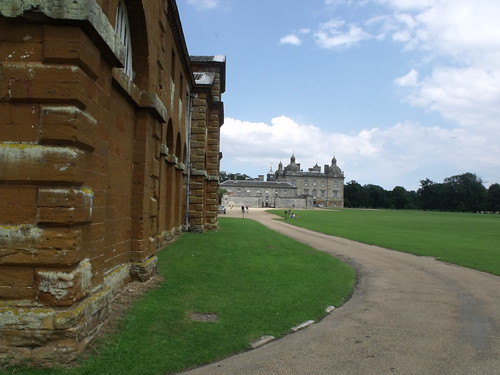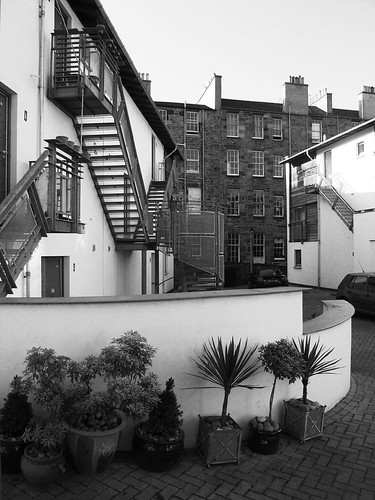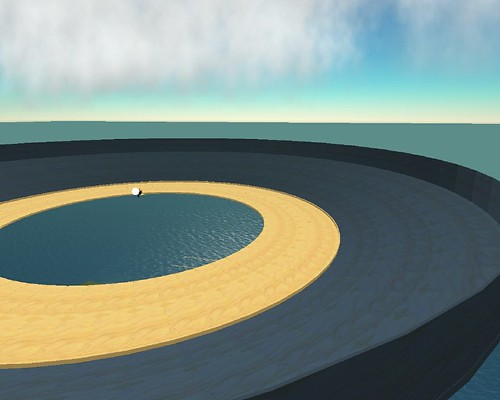Houghton Hall - Stable Square and mansion house
Image by ell brown
Houghton Hall was the home of Sir Robert Walpole, Britain's first Prime Minister from 1721 to 1742.
Houghton was built between 1722 and 1735.
This is the Stable Square at Houghton Hall. Inside is the Soldier Museum, Restaurant, Gift Shop and Stables.
This is the second stables that Sir Robert Walpole built at Houghton, between 1733 and 1735. The external walls are made of the local yellow Snettisham stone and the walls are brick.
The stables replaces an earlier quadrangle built between 1719 and 1721, which was the first of its kind at a country house. But the old one was too close to the house, so Sir Robert Walpole had it demolished, and then started again on a new site further from the house and out of view.
The stables are Grade I listed.
Stables - Houghton Hall - Heritage Gateway
Stable courtyard, known as the Square. C.1730, attributable to William Kent,
but perhaps supervised by Thomas Ripley architect. For Sir Robert Walpole,
later 1st Earl of Orford. Palladian. Largely coursed carstone, some brick
on south and west facades, brick with carstone dressings to interior courtyard.
Smut pantiles and slates, 15 bay east and west and 13 bay north and south
ranges, built around a courtyard. East and west facades have 3 bay centre-
pieces, 6 bay north and south ranges. Single bay angle towers. Centre bay
has raised chamfered rusticated keyed arch, boarded door. 2 flanking bays
having single boarded doors under arches with fixed casement lunette heads.
Each bay has single 2-light casements. Raised chamfered rusticated quoins
to central bay and flanking bay angles. Centre has third storey with Diocletian
window. Flanking bays have lean-to half pediments, clasping central full
pediment, Palladio's Rendentore arrangements. 6 north and south bays have
ground floor blank bays with piers with simple bases and capitals, fixed and
opening casements in arches above. 6 north and south 2-light casements above.
End bay forms angle towers with recessed blank bays with casements in arches,
2-light casements above. Raised and chamfered angle quoins. Octagonal third
storey turrets with round arched oculuses, cornice, and octagonal slated roofs
with large scale acorn finials. 4 roundels on pedestals at parapet level,
a direct Palladio quotation. Whole facade articulated with ground level plinth
first floor platband and eaves modillion cornice. West range has in addition
carved and brick blank arches to ground floor. Coat of arms with swags in
central pediment. Late C17 from earlier house with quarterings of Sir Robert
Walpole's grandfather. 4 stacks to each ridge. North facade has blank arches
with lunettes. Single bay centrepiece with rusticated, keyed open arch, third
floor Diocletian window and pediment. South facade has brick blank arches
to ground floor. 2 stacks to each ridge. Entrance arches have 2 leaf
contemporary iron gates. Courtyard facades: 13 bay east and west, and 9 north
and south, repeat details of outer facades. Brick with carstone plinths,
platbands and modillion cornices and pediments. Contemporary 2 leaf cast iron
gates with speared dog and upper rails fixed against inner north and south
entrances. Interior: ground floor with brick quadripartite vaults. At north
east C18 stalls with oak Doric columns, with roundels marking divisions,
rectangular oak piers supporting vaults. C19 loose boxes. West range largely
converted to garages c.1900. See Isaac Ware Plans, Elevations and Sections
of Houghton. (1735) 1750 edition pls. 33, 34. Mrs Herbert Jones Houghton in
the Brake (Norwich 1878).
Views of Houghton Hall - the mansion house to the right of the stable square.
It is Grade I listed.
Houghton Hall - Heritage Gateway
Country House. 1722-1735 for Sir Robert Walpole, the first Prime Minister of
Great Britain (1717-1742), in rivalry with his brother-in-law's Raynham.
Reputed to have been built largely from public funds, a "house of State and
Convenience" (Colen Campbell) for the "Houghton meeting" house-parties and
for Walpole's picture collection here 1742-1779. Design, published by Colen
Campbell in Vitruvius Britannicus III (1725), under discussion 1721, executed
by Walpole's protege in the King's Works, Thomas Ripley, modified by James
Gibbs, decorated by William Kent. Palladian with some Baroque references. Fine
Whitby stone ashlar, pantiled roofs. 3 storey 9 by 5 bay centre with 4 advanced
angle towers, single storey colonnaded wings, quadrant to west, dog-leg to
east. 2 storey 7 by 7 bay service wings with courtyards beyond. East front
has rusticated basement with plinth and first floor platband.
Dublin Street Colonies
Image by Daveybot
This is a housing project by the practice where I work. It was pretty radical for Edinburgh (still is, frankly) but it's aged very well so far. The several buildings which make up the design are based on the footprint of an old village which was more or less left behind during the creation of Edinburgh's New Town. If you like the look of it, I recommend having a read of the project description on the practice website, where you'll also find some more photies and drawings.
POND13_014_001.bmp
Image by Gary Hayes
With external barriers, inner track block and now building the viewing and pit area
No comments:
Post a Comment